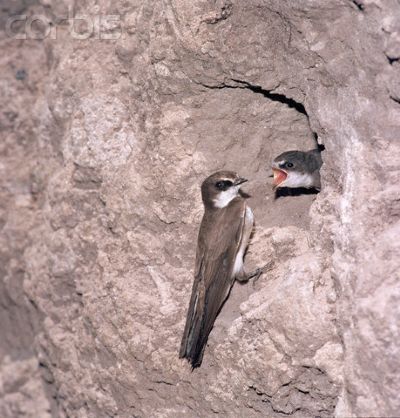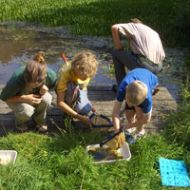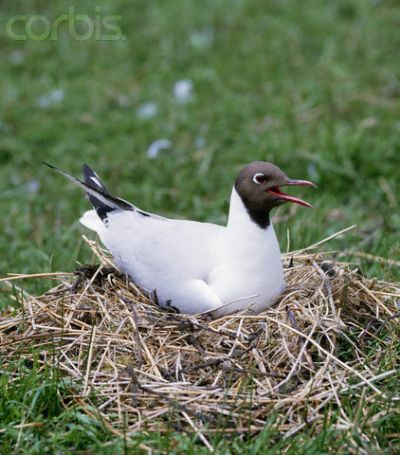 Biodiversity in Inverclyde, Renfrewshire and East Renfrewshire | sitemap | log in Biodiversity in Inverclyde, Renfrewshire and East Renfrewshire | sitemap | log in
|
 |
||
| Spanglefish Gold Status Expired 28/04/2010. | ||
LBAP ProjectsThe Inverclyde, Renfrewshire and East Renfrewshire Local Biodiversity Action Plan have been involved in numerous projects to enhance and preserve habitats and species within an area. An example of one of many successful projects is the construction of the first artifical Sand Martin nesting wall. Sand Martins check in at InchinnanThe Biodiversity Partnership's first purpose built artificial Sand Martin nesting wall was constructed in 2006, thanks to funding from the Community Environmental Renewal Scheme (Scottish Executive & Forward Scotland), Scottish Natural Heritage, Professor Boldwen Lloyd Binns Bequest Fund, Paisley Natural History Society and Renfrewshire Council. Sand Martins are a UK species of conservation concern. They spend winter in Africa but migrate in the spring to breed in Europe, making a round trip of at least 5000 miles. For the first two years, however, no Sand Martins used the wall but finally this spring around six pairs have decided to take up residence. The wall is installed near, Inchinnan, close to Newshot Island proposed Local Nature Reserve. It is hoped that the offspring raised at the wall this year will return when it's their turn to breed, so that more birds arrive each spring in future years.
A Sand Martin feeding its young. (Photo: Peter Johnson) To learn more about other LBAP projects read our Biodiversity Action Newsletter. Click on the link below (PDF): Biodiversity/documents/Learn/LBAP%20newsletter%20issue%201%202008-06-20%20final.pdf Habitat Enhancement Projects
Children pond dipping.
These are a few habitat enhancement projects to enhance and preserve our local area. Included after Species Projects is the full PDF link with much more details. Species Enhancement Projects
Renfrewshire and North Aryshire Councils co-funded a team from Scottish Wildlife Trust to conduct some tree clearance work on the island to allow the Black-headed Gulls to nest again this season.
Black-Headed Gull on nest. (Photo: Roger Wilmshurst)
Barn Owl in front of its nesting box.
To find out more information on the full Update Report and Rolled Forward Actions for 2008-2011(PDF) click on the link below: Biodiversity/documents/Learn/2008-2011%20Roll%20Forward%20Report.pdf Biodiversity & ......VolunteersThe LBAP includes a Habitat Action Plan for Broadleaved and Mixed Woodland which encourages native tree planting at appropriate sites. Volunteers from National Australia Group Europe, which owns Clydesdale Bank, helped to plant 1,500 trees. Planting took place at Finlaystone Estate as part of a project which aims to diversify both the age structure and species within woodland present on the site. Volunteers were keen to make a difference to the local landscape in which they work and live. EducationThe Tree Seed Collection project involved school children collecting tree seeds and nuts in the autumn from native tree species in thier local area. The project will provide environmental, biological science education and depending on the success of the project it may also provide enterprise education as some of the trees could be sold. The children will learn about biodiversity, different tree species, which are native and why that's important, woodland ecology, how seeds grow and how to care for them. Once the trees have grown they can be planted in suitable locations such as parks, local nature reserves or even school grounds. The project will fufil one of the actions in the Broadleaved & Mixed Woodland Habitat Action Plan by encoraging native tree planting. These are a few examples of on ongoing projects. To find more information on Biodiversity Progress Report click on the link below: Biodiversity/documents/Learn/progress%20report3.pdf Biodiversity planning is an ongoing process and the biodiversity partnership intends to produce further species and habitat action plans where action is required to prevent their loss or decline.
|   |
|
 | ||



